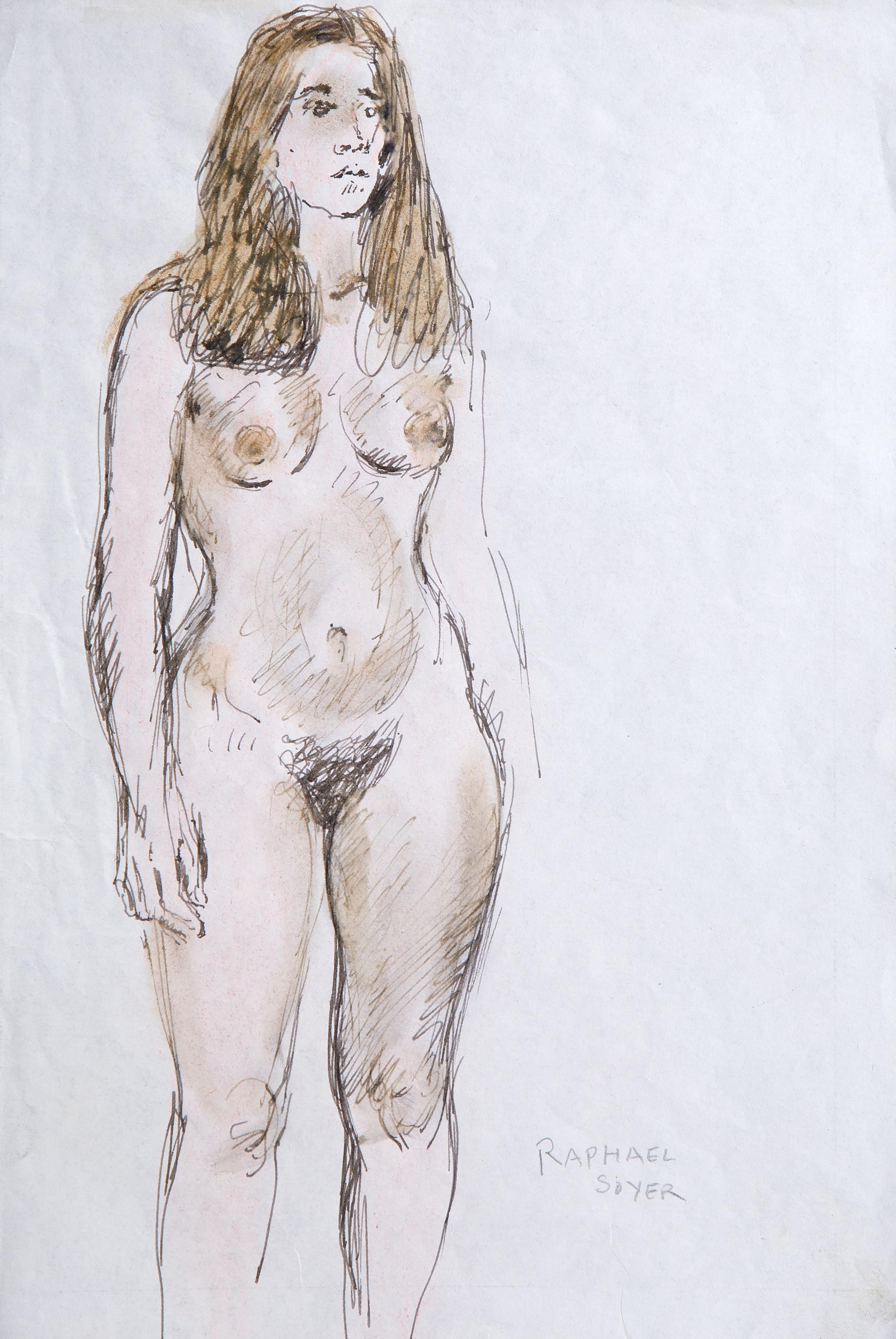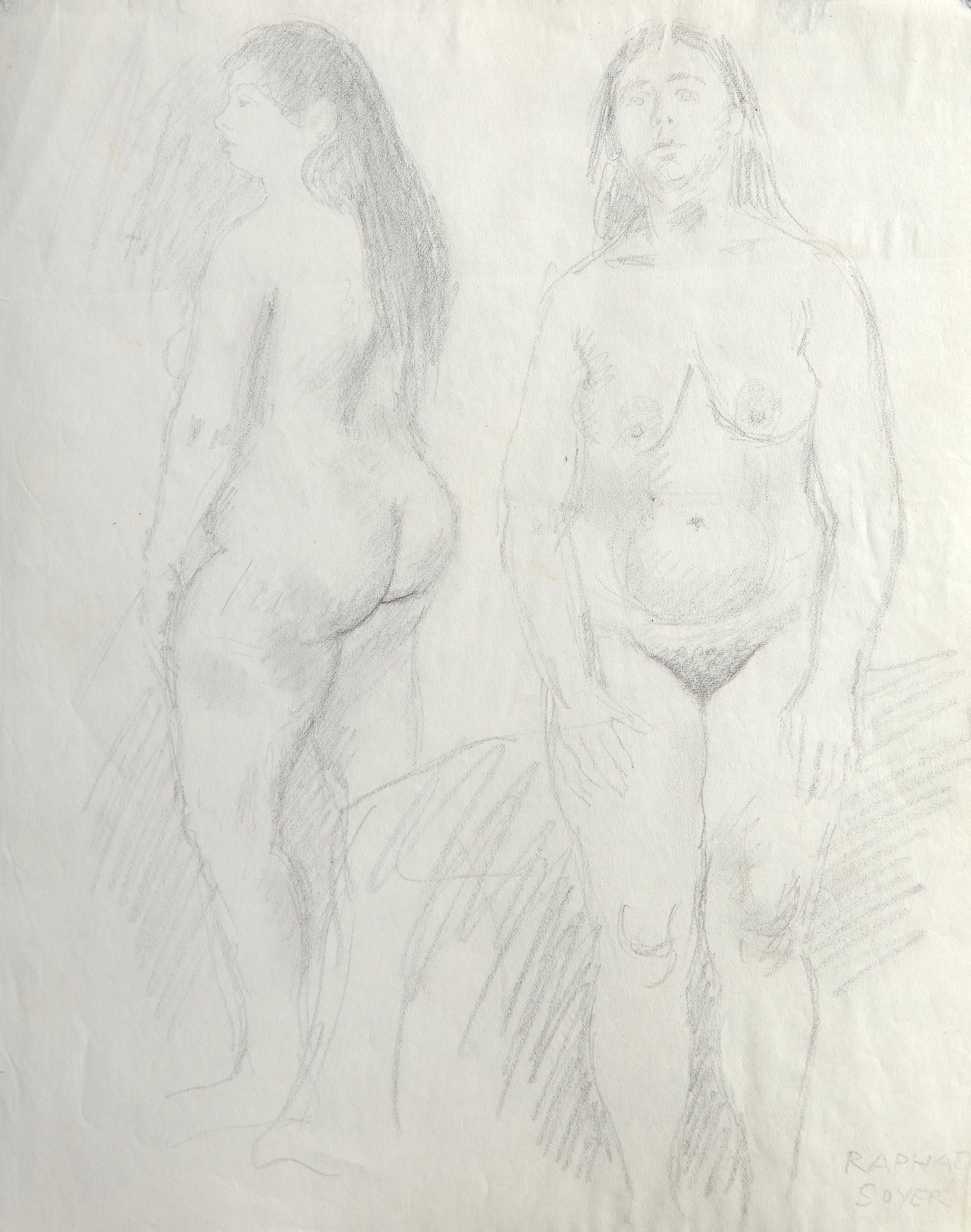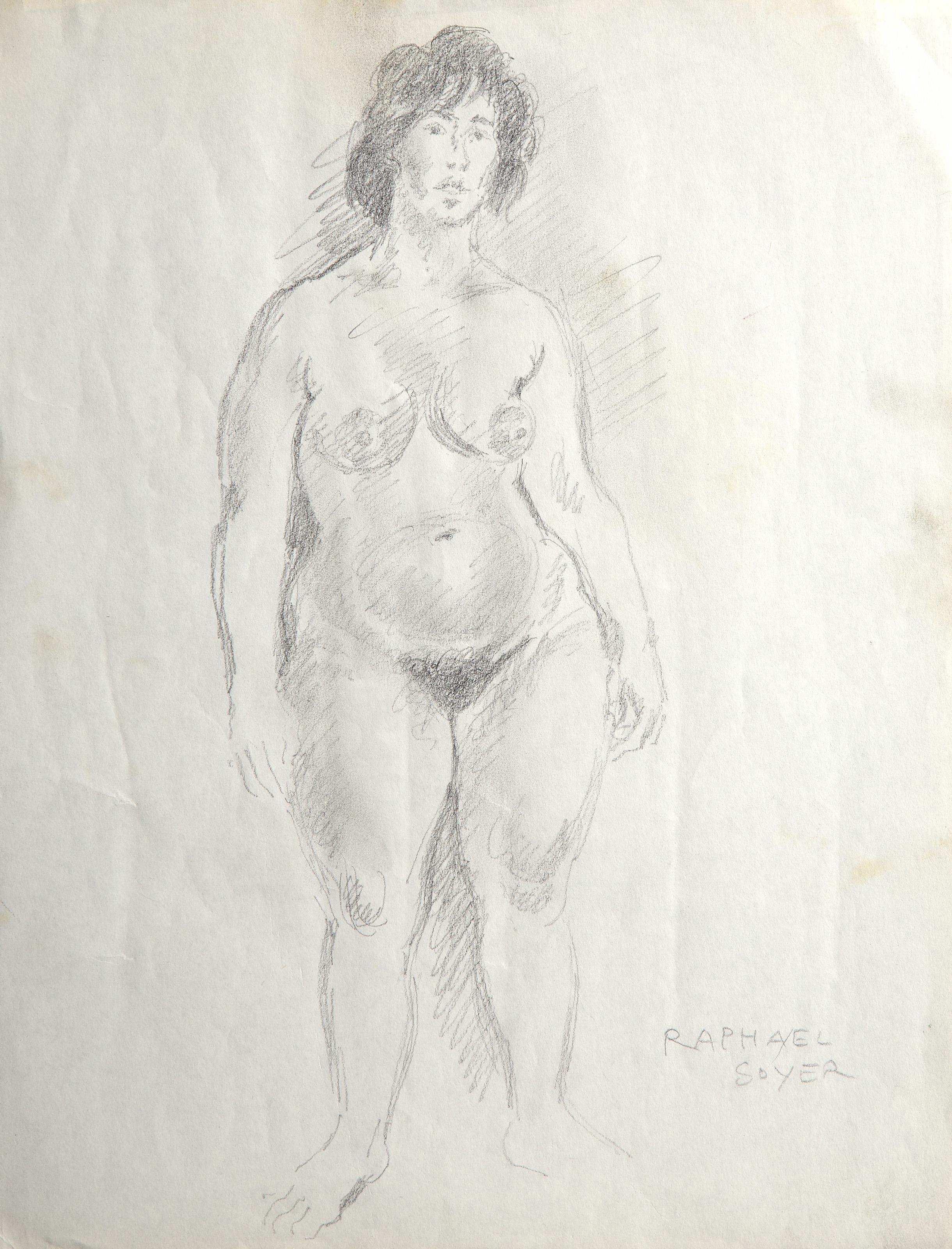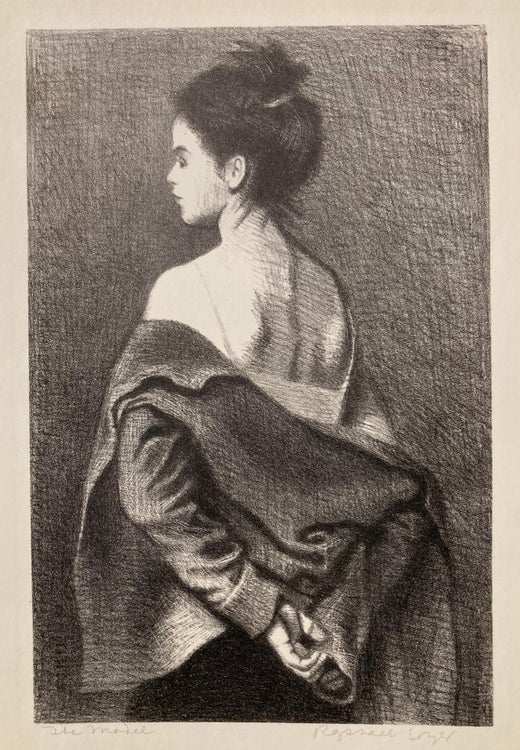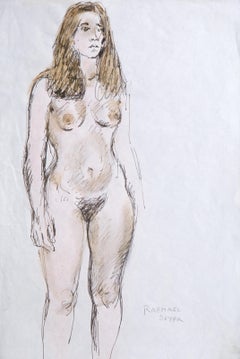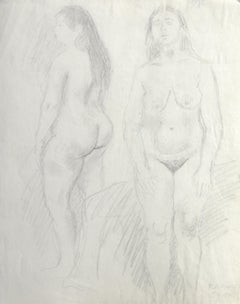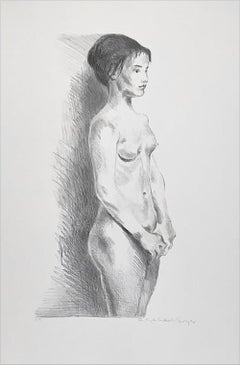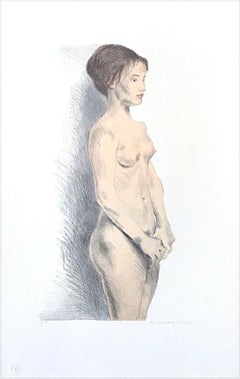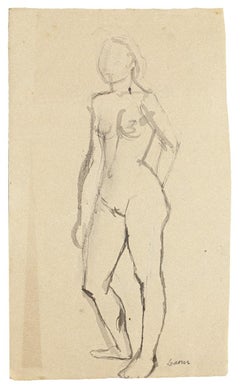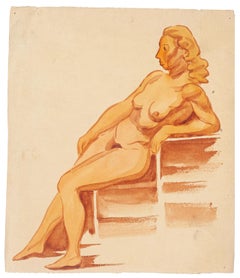Raphael SoyerNude Figure, Watercolor and Graphite on Paper by Raphael SoyerMid-20th Century
Mid-20th Century
About the Item
- Creator:Raphael Soyer (1899-1987, American)
- Creation Year:Mid-20th Century
- Dimensions:Height: 25 in (63.5 cm)Width: 19.75 in (50.17 cm)
- Medium:
- Movement & Style:
- Period:
- Framing:Framing Options Available
- Condition:
- Gallery Location:Long Island City, NY
- Reference Number:Seller: 821611stDibs: LU46614406912
Raphael Soyer
Raphael Soyer, a Russian-born artist, was best known for his compassionate, naturalistic depictions of urban subjects. His sensitive, penetrating portrayals include a broad range of city dwellers, dancers, shoppers, office workers and fellow artists. Historically, Soyer is associated with the social realist artists of the 1930s, whose art championed the cause of social justice. Soyer was referred to as an American scene painter. He is identified as a Social Realist because of his interest in men and women viewed in contemporary settings which included the streets, subways, salons and artists' studios of New York City. He also wrote several books on his life and art. His brothers Moses and Issac were also notable artists.
- ShippingRetrieving quote...Shipping from: Long Island City, NY
- Return Policy
More From This Seller
View AllMid-20th Century Modern Drawings and Watercolor Paintings
Ink, Watercolor
1970s American Impressionist Portrait Drawings and Watercolors
Watercolor, Pencil
1960s American Realist Nude Drawings and Watercolors
Watercolor
Mid-20th Century Modern Drawings and Watercolor Paintings
Graphite
Mid-20th Century Modern Drawings and Watercolor Paintings
Graphite
1970s American Impressionist Portrait Drawings and Watercolors
Ink
You May Also Like
1970s Realist Nude Prints
Lithograph
1970s Realist Nude Prints
Lithograph
20th Century Figurative Drawings and Watercolors
Watercolor
Mid-20th Century Figurative Drawings and Watercolors
Watercolor
1960s Contemporary Figurative Drawings and Watercolors
Watercolor
1960s Modern Figurative Drawings and Watercolors
Watercolor
Read More
Romare Bearden’s Humanity Infuses His Bright, Bold Art
Through collage, painting and printmaking, the artist foregrounded Black life in America in revolutionary new ways.
Chryssa’s 1962 Neon Sculpture Was Way ahead of the Art-World Curve
By working with lettering, neon and Pop imagery, Chryssa pioneered several postmodern themes at a time when most male artists detested commercial mediums.
